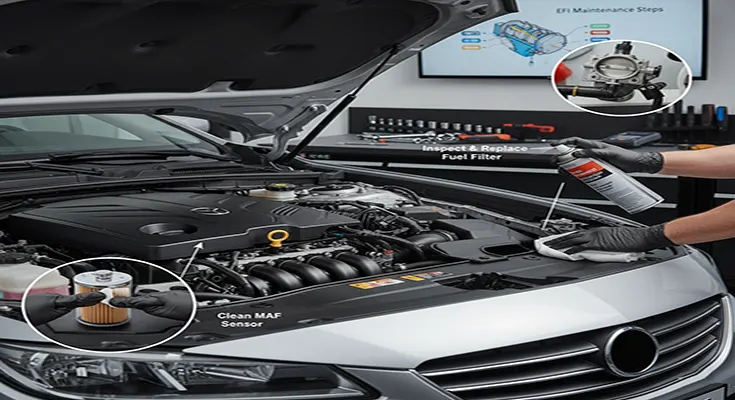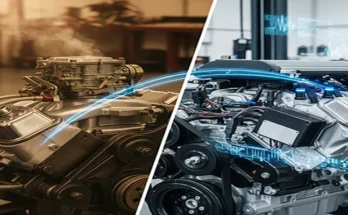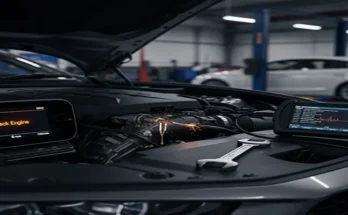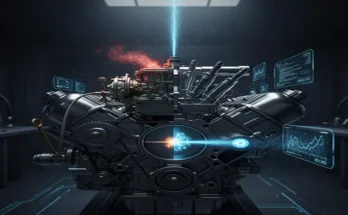Modern vehicles owe their efficiency, smooth performance, and low emissions largely to the Electronic Fuel Injection (EFI) system. Replacing the old carburetor, the EFI system acts as the engine’s precision chef, electronically measuring and injecting the exact amount of fuel needed for perfect combustion.
While the EFI system is highly reliable, neglecting it can lead to rough idling, poor gas mileage, and costly repairs. The good news is that keeping your EFI system healthy is simple! Here is a beginner’s guide to proactive EFI maintenance.
1. The Golden Rule: Use Quality Fuel
The quality of the fuel you put in your tank is the single most important factor for EFI health.
- Avoid Contaminants: The fuel in your tank is the lifeblood of the EFI. Low-quality or contaminated fuel can introduce dirt, debris, and deposits that clog the fine spray nozzles of your fuel injectors.
- Stick to Reputable Stations: Always use fuel from well-known, reputable gas stations. Try to avoid filling up when you see the fuel delivery truck actively replenishing the station’s tanks, as this process can stir up sediment at the bottom of the station’s storage tank, which might end up in your fuel.
- The Quarter-Tank Rule (for your fuel pump): Your electric fuel pump, which pressurizes the system, is often submerged in the fuel tank. This fuel acts as a coolant. Consistently running your tank down to “E” forces the pump to work harder and potentially overheat, shortening its lifespan. Try to keep your tank above the quarter-full mark.
2. Keep it Clean: Filters and Injector Additives
Cleanliness is next to godliness for a high-precision system like EFI. Two simple items are your best friends here.
- Replace Your Fuel Filter: The fuel filter is the primary defense against contaminants reaching your injectors and fuel pump. Over time, it will inevitably become clogged. A restricted filter starves the engine of fuel, causing a loss of power and straining the fuel pump.
- Tip for Beginners: Check your vehicle’s owner’s manual for the recommended replacement interval. This is typically between 20,000 to 30,000 miles, but always defer to your manufacturer’s recommendation.
- Use Fuel Injector Cleaner Periodically: High-quality fuel injector cleaners are additives poured directly into your fuel tank. They contain detergents designed to dissolve carbon deposits and varnish that can build up on the injector tips.
- Tip for Beginners: Use a cleaner as a preventative measure every few thousand miles, or if you notice mild symptoms like a rough idle or slight hesitation. It’s a cheap and easy DIY step.
3. Breathe Easy: Air Filter and Throttle Body Check
The EFI system works by mixing a precise amount of fuel with the incoming air. If the air is restricted or dirty, the whole system suffers.
- Inspect Your Air Filter: A clogged engine air filter restricts the airflow, which can make the engine computer think it needs to inject more fuel, leading to poor fuel economy. Replacing a dirty air filter is one of the easiest and cheapest maintenance tasks.
- Clean the Throttle Body: The throttle body is where air enters the engine. Over time, carbon and oil vapors can create a sticky film on the throttle plate, especially around the edges. This buildup can interfere with the engine’s ability to maintain a steady, smooth idle.
- Tip for Beginners: This job may require a professional service in some newer vehicles, but basic throttle body cleaning spray and a clean cloth can be used by beginners to wipe away visible grime around the inlet—just be sure to use throttle body-specific cleaner and not just carburetor cleaner.
4. Know the Warning Signs
Being proactive also means recognizing early symptoms of a problem before they become severe.
| Symptom | Possible EFI-Related Cause |
| Reduced Fuel Economy | Clogged or leaking fuel injectors. |
| Rough Idling | Dirty or faulty fuel injectors or a problem with the idle air control system. |
| Engine Hesitation | Clogged fuel filter or a failing fuel pump not delivering enough pressure. |
| Check Engine Light (MIL) | Usually triggered by a faulty sensor (like an Oxygen Sensor or a Mass Air Flow sensor) which directly impacts the fuel-air mixture. |
| Difficulty Starting | Low fuel pressure, often due to a weak fuel pump. |
5. Leverage the Professionals: The Diagnostic Scan
The EFI system is controlled by the Engine Control Unit (ECU)—a dedicated computer. When a component fails or a sensor sends an abnormal reading, the ECU records a Diagnostic Trouble Code (DTC) and illuminates the Check Engine Light (MIL).
- Tip for Beginners: If your Check Engine Light comes on, the first step is to have the code read. Most auto parts stores will do this for free, giving you a starting point. While a simple scan is a good indicator, diagnosing the root cause (e.g., is the code a faulty sensor, or is the sensor just reading a symptom of another mechanical problem?) often requires a professional mechanic with specialized tools.
By simply committing to quality fuel, regular filter changes, and a keen eye for warning signs, even a beginner can keep their Electronic Fuel Injection system operating with the precision and efficiency it was designed for.





